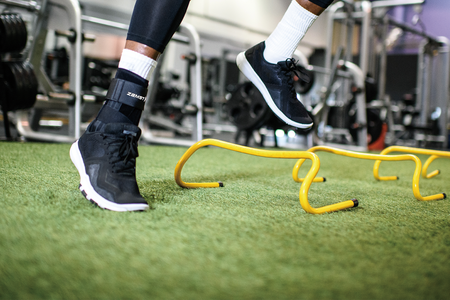Baseball season is officially in full swing and with a season lasting upwards of 5 months, injuries are inevitable. Players, most often pitchers have a greater instance of sustaining injuries due to the total number of throws made by position. During a baseball game, pitchers tend to make 51% of all the active throws compared to catchers (29%) or outfielders (3%)(Fortenbaugh 2009).
One injury that seems to becoming increasingly common in pitchers is ulnar collateral ligament (UCL) tears, which is a ligament located on the inner side of the elbow. Over the last four decades, one option for this injury is UCL reconstructive surgery, also known as, Tommy John Surgery. Since the first UCL reconstruction was performed in 1974, “the most commonly quoted success rate is 85%” with the ability for an athlete to return to “preinjury level of play”( Fortenbaugh 2009). The Tommy John procedure is a surgical graft procedure when the UCL in the elbow is replaced with a tendon from the body, most commonly taken from the palmaris longus tendon in the wrist or a graft taken from a cadaver, also known as an allograft.
The UCL injury can be a chronic or an acute injury. A chronic injury is most common, with a gradual onset of pain located on the inside of the elbow due to the UCL repetitively being bent outward, known as a valgus stress. This happens especially with overhead athletes with poor mechanics, lack of flexibility or fatigue.
This can lead to elbow muscle strain, micro tears to the UCL, and ultimately can cause degeneration of the elbow joint. “Anatomically, it was believed that valgus stress led to sequential failure of the medial elbow musculature, the UCL, the medial joint capsule and lastly, the joint itself”( Whiteley 2007). Repeated stress to the elbow causes the ligament to stretch and once it gets too long, it will stabilize the bones tightly enough during throwing activities.
In an acute injury, overhead throwing athletes will most likely feel and hear a sharp “pop” in their elbow. “Consequently the enormous medial elbow tensile forces generated during late cocking/acceleration may exceed the failure strength of the UCL, leading to a rupture”. In some cases, the ulnar nerve will get irritated and this is due to stress on the nerve once the ligament is stretched. The symptoms of a tingling sensation to the ring finger and pinky are commonly reported in the involved hand.
The throwing motion has 5 stages: Windup, Cocking, Acceleration, Deceleration, and Follow-Through. Pain is usually felt during the phase of throwing in which the arm accelerates forward, just prior to releasing the ball. The overhead throwing motion places extremely high stresses on the elbow because of the mechanics of the overhead motion, the elbow joint sustains a valgus force. In baseball pitchers and other throwing sports, high stresses are repeated because of the similar throwing motion.
Although throwing injuries in the elbow most commonly occur in pitchers, they can be seen in any athlete who participates in repetitive overhand throwing.
Jessica Thomas MS, ATC, CHC & Richard Martinez MA, ATC – Z Team
Fortenbaugh, Dave., Andrews, James R., Baseball Pitching Biomechanics in Relation to Injury Risk and Performance. www.sagepub.com/journalsPermissions.nav. 2009: 314-320.
Langer, P.,Fadale P., Hulstyn, M., Evolution of Treatment Options of Ulnar Collateral Ligament Injuries of the Elbow. Br J Sports Med. 2006 June; 40(6) 499-506
Whiteley, Rod. Baseball Throwing Mechanics as they Relate to Pathology and Performance. Journal of Sports Science and Medicine 2007:6:1-20.






